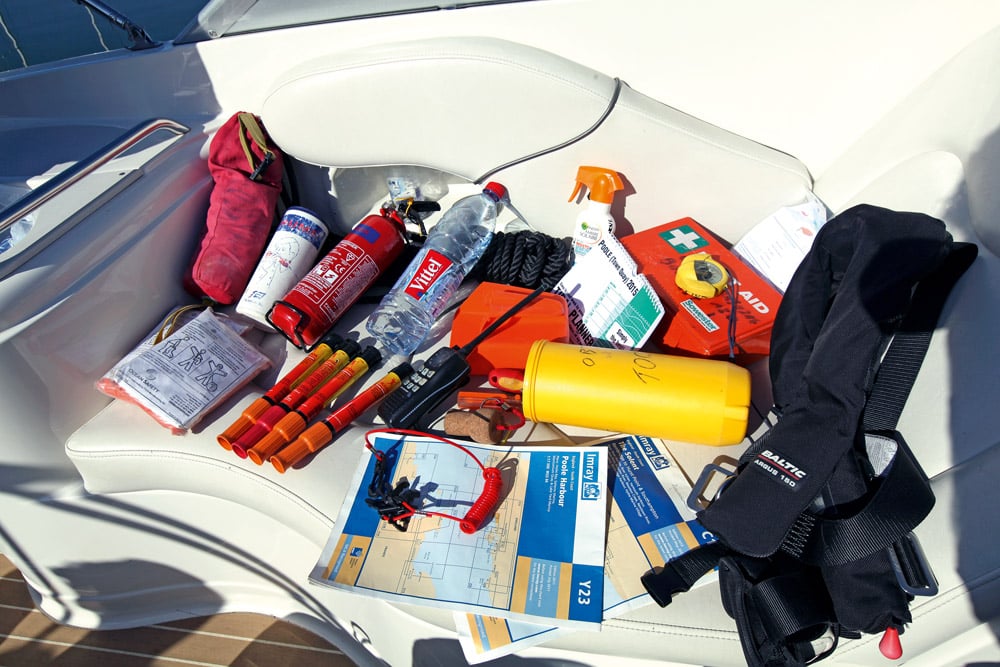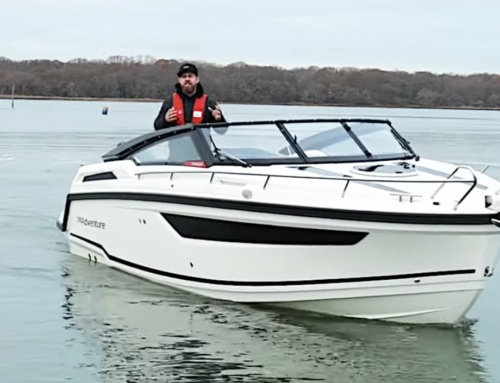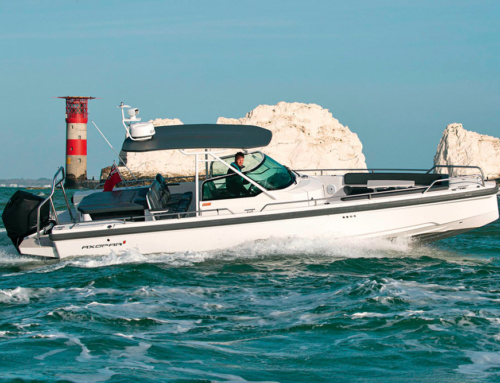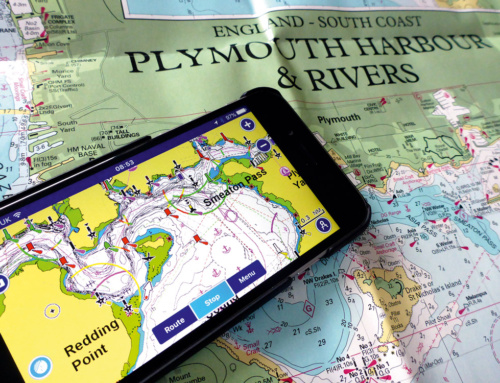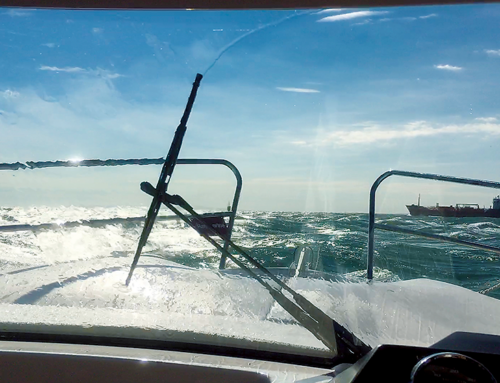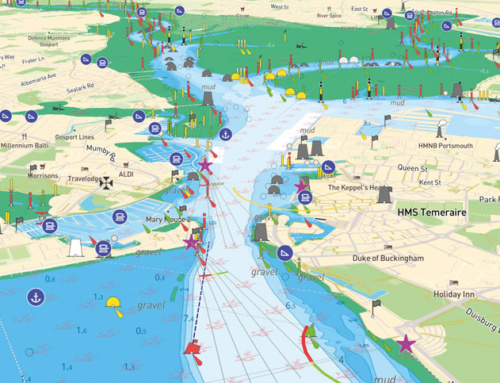Paul Glatzel stresses the importance of prioritising safety at sea …
As a skipper you have a responsibility to ensure that everyone who comes boating with you is safe. You have to ask yourself what is practical and realistic to do, and how you can make the issue fun while getting ‘buy-in’ from those you boat with.
Let’s start by looking at a couple of subjects that always get a discussion going on social media and among powerboaters. ‘Is it really necessary to use a kill cord and wear a life jacket – after all, I have never fallen out of the boat and don’t intend to start now?’
This is a common comment and one that is easy to overcome if you or those that boat with you are raising this question. A question for you: do you own or rent a house/flat and do you have insurance that covers fire? I suspect the answer is yes, yet very few people suffer a fire, so why bother?
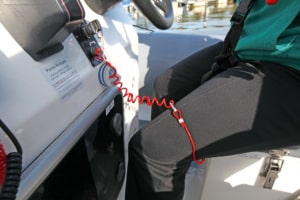 In the case of fire, we have insurance just in case we suffer that ‘one in a million’ chance that it happens. This is exactly the way to look at wearing a life jacket and a kill cord. Of course, we never plan on falling from a boat, but if we do, we are at serious risk of death. It’s very different jumping into the water when mentally you are ready for it – to swim, waterski, dive, etc. Go in accidentally, though, and even assuming you don’t bang your head, then you’ll immediately face a condition called ‘cold-water shock’ – you will gasp for breath, with a single inhalation of breath amounting to 2–3 litres of air. If you inhale water instead of air to this amount, you will drown.
In the case of fire, we have insurance just in case we suffer that ‘one in a million’ chance that it happens. This is exactly the way to look at wearing a life jacket and a kill cord. Of course, we never plan on falling from a boat, but if we do, we are at serious risk of death. It’s very different jumping into the water when mentally you are ready for it – to swim, waterski, dive, etc. Go in accidentally, though, and even assuming you don’t bang your head, then you’ll immediately face a condition called ‘cold-water shock’ – you will gasp for breath, with a single inhalation of breath amounting to 2–3 litres of air. If you inhale water instead of air to this amount, you will drown.
Without a life jacket your mouth will be level with the water, increasing the chances of gasping in water, but with a properly fitted life jacket your mouth will be higher and the support it gives you will probably mean you panic less. If you are in the water with your kids, then you’re better placed to help them too. In short, falling in places you at massive risk of drowning – wearing a life jacket dramatically reduces that risk.
Hopefully that persuades you to buy and wear a life jacket. Buy an automatic one so it just works if you fall in, and try on a few to see which you prefer wearing. I absolutely guarantee that if you get a life jacket that fits you nicely you won’t even notice it after 10–15 minutes. Get the kids wearing them too, and as they move towards taking their own mates out, make it seem like the natural thing to do so that they ensure their mates wear them too. Don’t just tell kids to do it – get them to understand the logic as per above.
So what about the kill cord? Again, you may say that you have never come close to falling out of a moving boat. Probably everyone that falls out of a boat for the first time feels the same way, but it does happen, and when it does, the risks to you, your family and people in other boats and ashore are huge. The very sad experience of the devastating incident involving the Milligan family in Cornwall in 2013 shows that a momentary lapse can impact so many people. A quick search on YouTube throws up many other examples.
How you wear the kill cord matters too: always around the thigh or to a strong point on the belt of a life jacket/buoyancy aid – but NEVER to your wrist, as it has been proven in some incidents that the kill cord can easily slip over a hand. The traditional curly simple kill cord works just fine, but there are now other electronic versions available. Whatever option you choose matters less than whether you use it at all – and properly.
In summary, think of a kill cord and a life jacket as an insurance policy. Yes, they cost; yes, we’d rather not use them; but in the ‘one in a million’ chance we need them they’ll be the best investment you and your family ever make.
So what about the other safety kit you want to check on your boat before the season gets going?
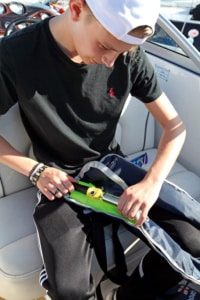 We need a means of getting help. We will all tend to think of mobile phones because that’s what we use day to day. Phones are great, but the preferred method afloat is a marine VHF radio. Hand-held or fixed sets are available, and at least one person on board needs to do the RYA one-day course and get a licence, as it is not immediately obvious which channels to use for various tasks. If you do use your phone, dial 999 and ask for the coastguard. Whenever you do need assistance, make sure you contact the coastguard early and make them aware as it’s better they know sooner rather than later.
We need a means of getting help. We will all tend to think of mobile phones because that’s what we use day to day. Phones are great, but the preferred method afloat is a marine VHF radio. Hand-held or fixed sets are available, and at least one person on board needs to do the RYA one-day course and get a licence, as it is not immediately obvious which channels to use for various tasks. If you do use your phone, dial 999 and ask for the coastguard. Whenever you do need assistance, make sure you contact the coastguard early and make them aware as it’s better they know sooner rather than later.
Distress flares have been around for ever, and there is always much debate about whether holding and letting off what are essentially fireworks makes sense and is safe. The reality is that while there are some electronic beacons available, for many small boats in busy boating areas flares are really handy to have, as those seeing a flare know what it means and will come to your aid. Read the instructions, though (well before you ever need to use a flare), and have some gloves and goggles with the flare pack.
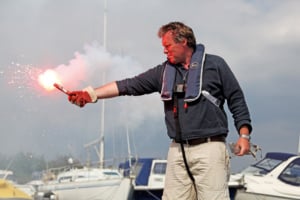 Another often overlooked item is a first-aid kit. Don’t bother with the useless little first-aid kits you get from shops. In reality, when you’re afloat, the two situations you are most likely to need to deal with are either a major bleed or something that’s broken. Buy four large wound dressings online (less than £1 each) and stock your own little kitchen food storage-type box with those, a survival bag, some latex gloves and a roll of gaffa tape; and think about a CPR mask and a little first-aid book too. Better still, do a one-day first-aid course, as you never know when you might need the skills. I’d also make sure you have a stock of fresh water and some energy bars.
Another often overlooked item is a first-aid kit. Don’t bother with the useless little first-aid kits you get from shops. In reality, when you’re afloat, the two situations you are most likely to need to deal with are either a major bleed or something that’s broken. Buy four large wound dressings online (less than £1 each) and stock your own little kitchen food storage-type box with those, a survival bag, some latex gloves and a roll of gaffa tape; and think about a CPR mask and a little first-aid book too. Better still, do a one-day first-aid course, as you never know when you might need the skills. I’d also make sure you have a stock of fresh water and some energy bars.
Other items of kit to consider having on board include: some basic spares and tools like pliers and spanners; big cable ties; a fire extinguisher; a spare kill cord; a throwline; a bailer/bucket; wooden bungs if you have seacocks; paddles; and a serrated knife.
The final thing to cover is a safety brief. It may not seem easy giving those that come with you a safety brief, but it does matter that they know how the life jackets are worn and work, where the fire extinguisher is, how the kill cord attaches and why it’s important, and how to issue a distress call. If you don’t feel easy doing it, then tell them we told you to at PBR and blame us or your insurance company!
Have a safe and fun time afloat!

